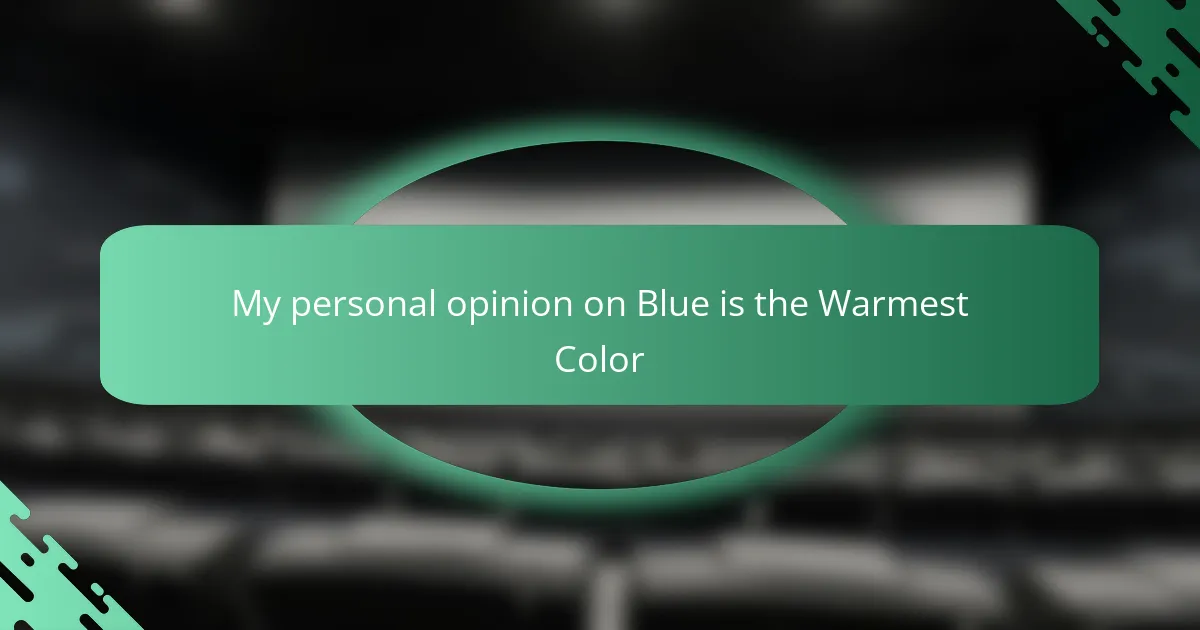Key takeaways
- French cinema is recognized for its artistic expression, complex characters, and innovative storytelling.
- “Blue is the Warmest Color” stands out for its raw portrayal of love, identity, and emotional depth.
- The film effectively uses cinematography, such as close-ups and natural lighting, to enhance emotional resonance.
- Key themes include the transformative power of love and the journey of self-discovery through relationships.
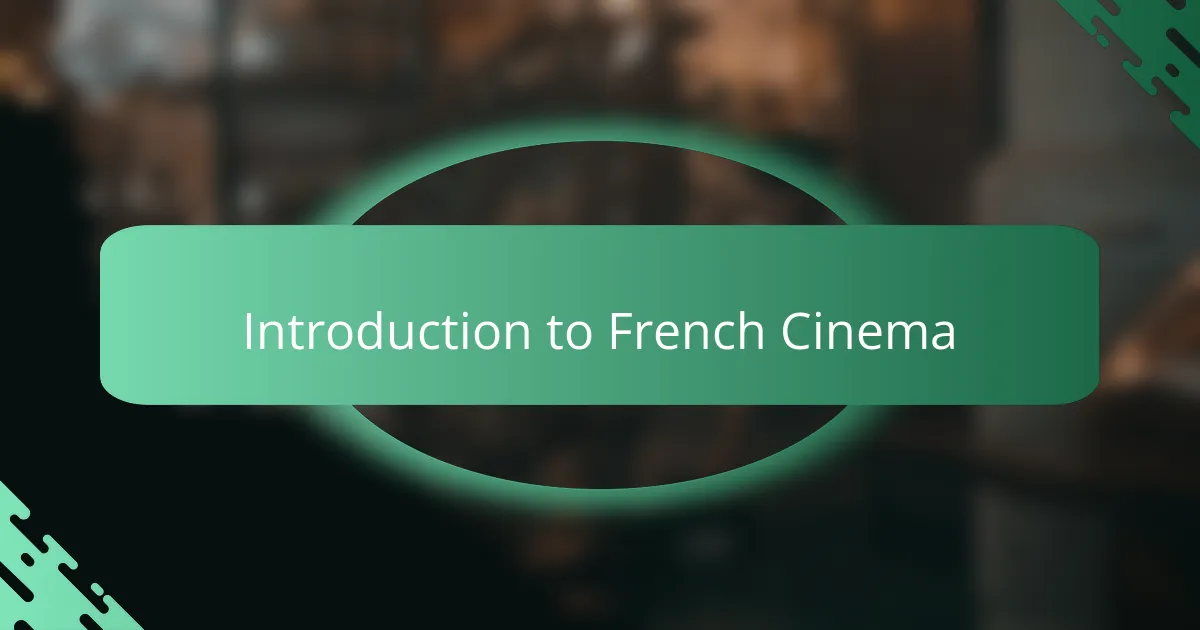
Introduction to French cinema
French cinema has long been celebrated for its ability to blend art with storytelling, creating films that captivate audiences worldwide. I remember my first encounter with a French film; the raw emotion and vivid storytelling felt like a breath of fresh air compared to the typical Hollywood fare. This unique approach often emphasizes character development and explores complex themes that resonate deeply.
The beauty of French cinema lies in its diversity and depth. Here are some key aspects that set it apart:
- Artistic Expression: French filmmakers often prioritize visual storytelling, using stunning cinematography to enhance emotional impact.
- Complex Characters: Protagonists are rarely one-dimensional. Their flaws, desires, and relationships make them relatable and human.
- Realism and Vulnerability: French films often tackle real-life issues, presenting them in a way that feels authentic and unfiltered.
- Cultural Reflection: These films provide insight into French culture, social issues, and the country’s history, enriching the viewer’s understanding.
- Innovative Storytelling: Experimentation with narrative structures keeps the audience engaged—think of the non-linear timelines and unconventional endings that challenge traditional storytelling norms.
In my experience, these elements make French films not just movies, but powerful experiences that linger in the mind long after the credits roll.
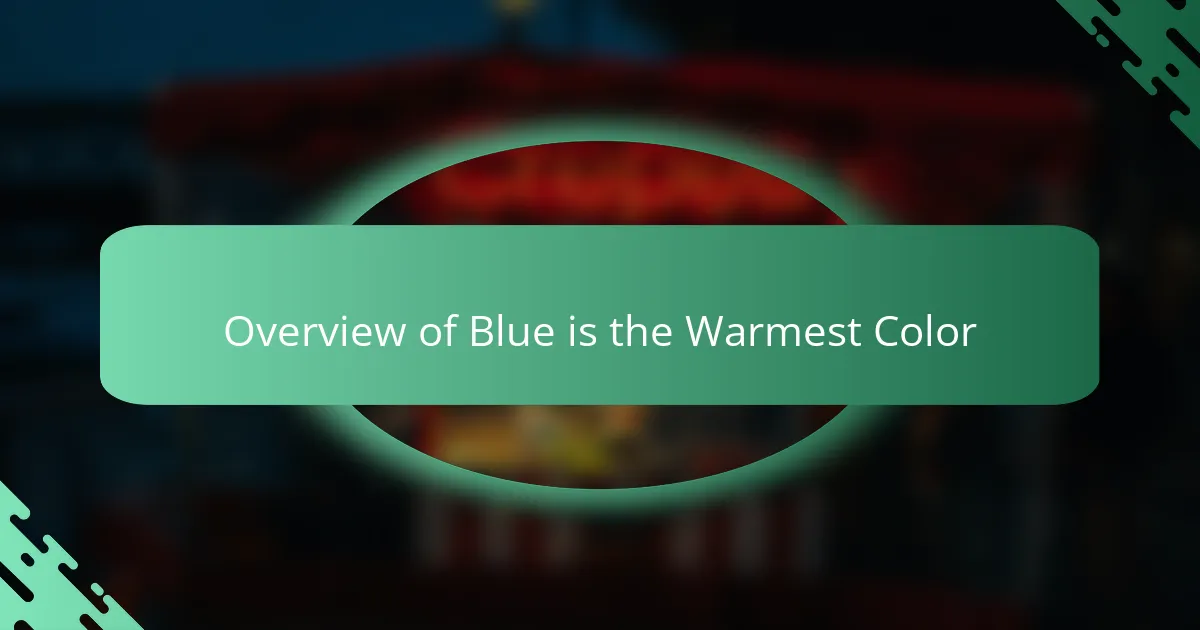
Overview of Blue is the Warmest Color
“Blue is the Warmest Color” is a highly acclaimed French film directed by Abdellatif Kechiche, focusing on the passionate love story between two young women, Adèle and Emma. I remember watching this film for the first time and being struck by the raw emotions and intense performances. The film’s exploration of love, identity, and self-discovery resonated with me deeply, vividly capturing the turmoil of first love.
What makes “Blue is the Warmest Color” stand out is not just its narrative but also its visual storytelling. The cinematography highlights the vivid blues that symbolize the characters’ emotional journeys, which I found particularly impactful. The film runs over three hours, but it immerses you in their world so completely that the time passes effortlessly. Here are some key aspects:
- Genre: Romantic drama
- Director: Abdellatif Kechiche
- Based on: The graphic novel “Blue Angel” by Julie Maroh
- Themes: Love, identity, self-discovery, and societal norms
- Awards: Palme d’Or at the 2013 Cannes Film Festival
- Unique Aspect: The film features an unfiltered portrayal of intimacy and emotional depth
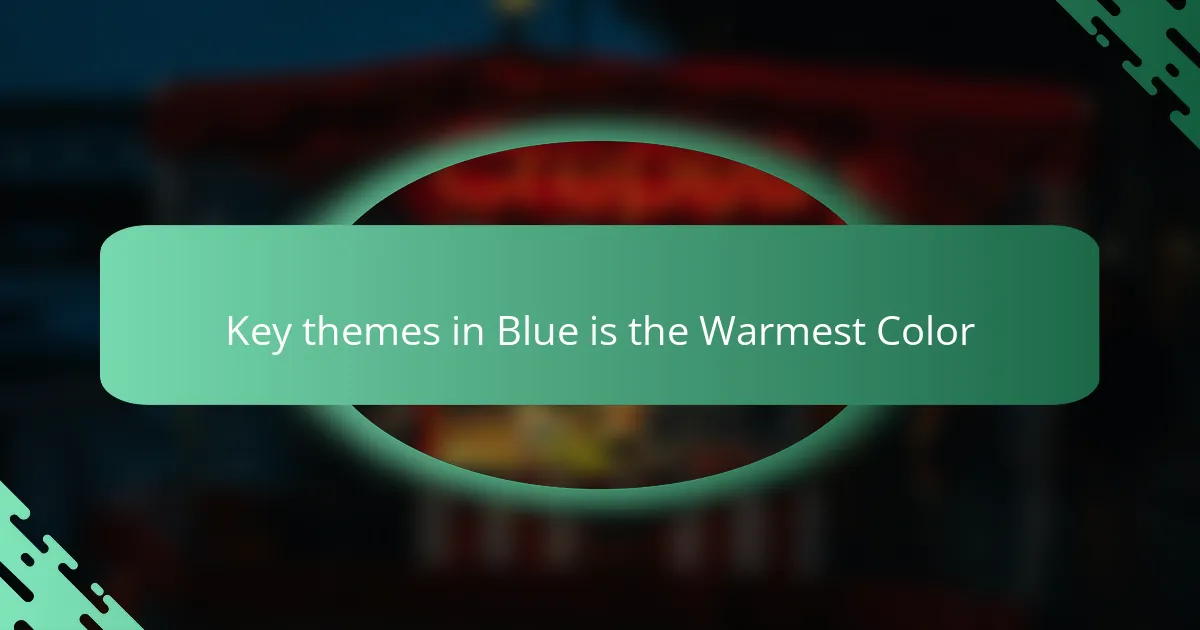
Key themes in Blue is the Warmest Color
In “Blue is the Warmest Color,” love takes the spotlight, exploring the complexities of relationships, identity, and self-discovery. The film poignantly captures the exhilarating highs of first love and the heart-wrenching lows, reminding me of my own experiences navigating young love. Beyond romance, it delves into themes of artistic expression and personal growth, reflecting how connections can shape our understanding of ourselves and the world around us.
The exploration of sexuality is treated with remarkable sensitivity, showcasing a journey of self-acceptance that resonates deeply with anyone who has ever felt different or uncertain. This theme of authenticity struck a chord with me; it made me reflect on my own path to embracing who I am, just like the characters in the film. The emotional depth of their connection leaves a lasting impression, inviting viewers to revisit their own stories of love and loss.
| Theme | Description |
|---|---|
| Love | Captures the passion and pain of young love, illustrating its transformative power. |
| Identity | Explores self-discovery and the journey towards embracing one’s true self. |
| Artistic Expression | Highlights the role of art in personal growth and connection. |
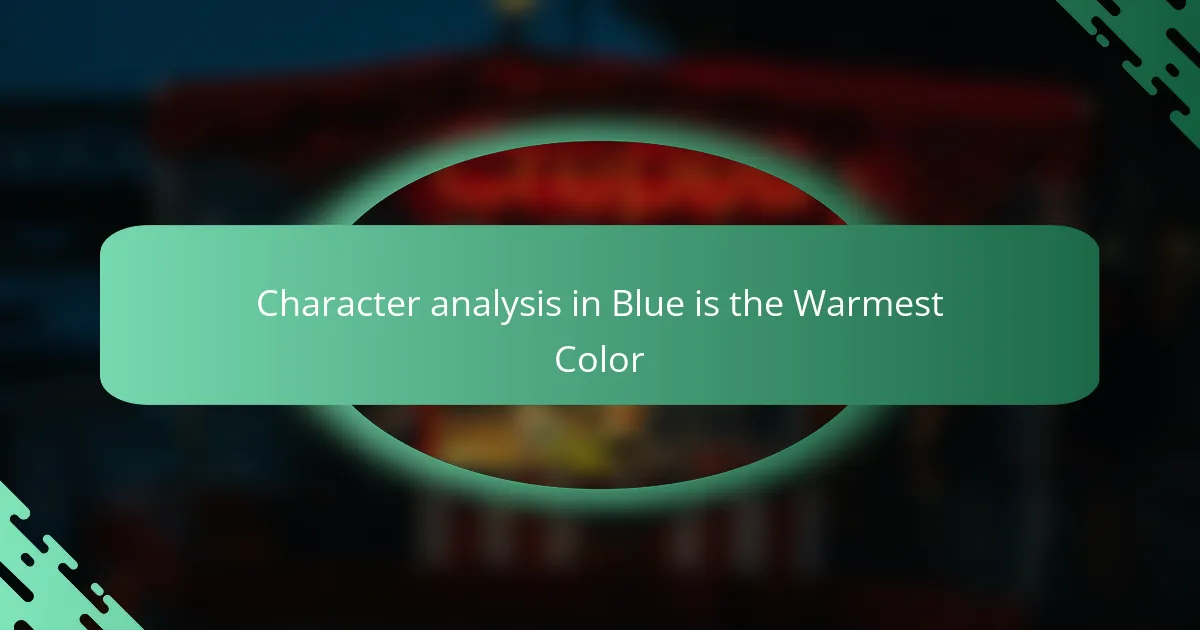
Character analysis in Blue is the Warmest Color
The characters in “Blue is the Warmest Color” depict a raw and emotional journey, particularly through the eyes of Adèle, the protagonist. I felt an intense connection with her as she navigates the complexities of love and identity. Her growth from a naive high school girl to a more self-aware individual is strikingly portrayed, showcasing both vulnerability and strength.
Then there’s Emma, who brings a world of experience and insight to Adèle’s life. Watching their relationship evolve is both beautiful and heartbreaking. From my perspective, Emma’s artistic spirit and self-assuredness contrast sharply with Adèle’s initial uncertainty, illustrating the transformative power of love.
Their interactions are filled with honesty and longing, making it easy to empathize with their struggles. The depth of their connection reminded me of my own formative experiences in relationships, making the film not just a story about love, but about the journey of finding oneself.
| Character | Traits |
|---|---|
| Adèle | Naive, passionate, emotional growth |
| Emma | Artistic, confident, nurturing |

Cinematic techniques used in the film
The cinematography in “Blue is the Warmest Color” deeply impacted my viewing experience. The film uses close-up shots to create intimacy, allowing me to connect with the characters’ emotional landscapes. Each frame feels carefully composed, immersing the viewer in their poignant journey of love and self-discovery.
In my experience, the film’s lighting plays a significant role as well. The use of natural light enhances the authenticity of the story, making the moments feel more genuine. It’s almost as if you can feel the warmth of the sun on your skin during their joyful scenes, and then the shadows in the more difficult moments resonate with the complexities of their relationship.
- Close-up shots emphasize emotional depth and character development.
- Natural lighting enhances authenticity and immersion in the setting.
- Color grading shifts reflect the characters’ emotional states, particularly the color blue as a symbol of both melancholy and passion.
- Long takes create a realistic pace that pulls viewers into the characters’ experiences.
- Framing often isolates characters, highlighting their internal struggles and personal growth.
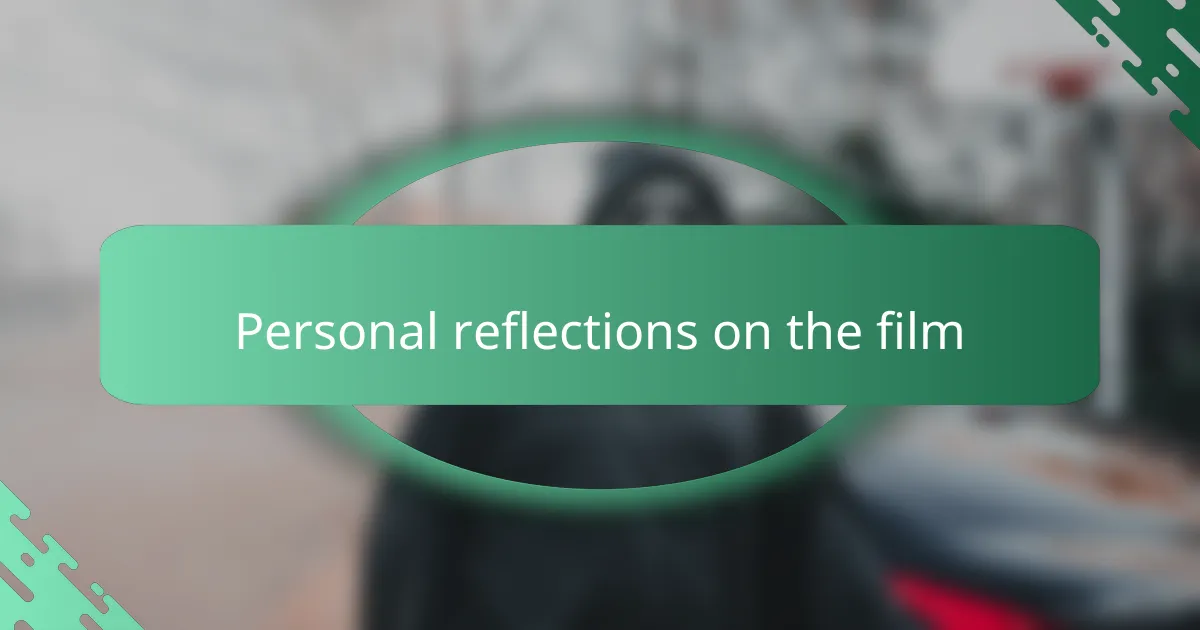
Personal reflections on the film
Reflecting on “Blue Is the Warmest Color,” I can’t help but recall the intense emotions I felt while watching it for the first time. The rawness of the love story tugged at my heart in a way that still resonates with me. I remember sitting in my living room, completely drawn in, experiencing the highs and lows of Adèle and Emma’s relationship as if they were my own.
There are several key takeaways that make this film unforgettable:
- The portrayal of first love is both beautiful and painful, echoing my own experiences.
- The cinematography captures the vibrant emotions associated with love and heartbreak.
- The film emphasizes the complexity of relationships, reminding us that love is not always simple.
- It offers a candid exploration of identity and self-discovery, which I found incredibly relatable.
- The performances by Léa Seydoux and Adèle Exarchopoulos bring a depth that left a lasting impression on me.
